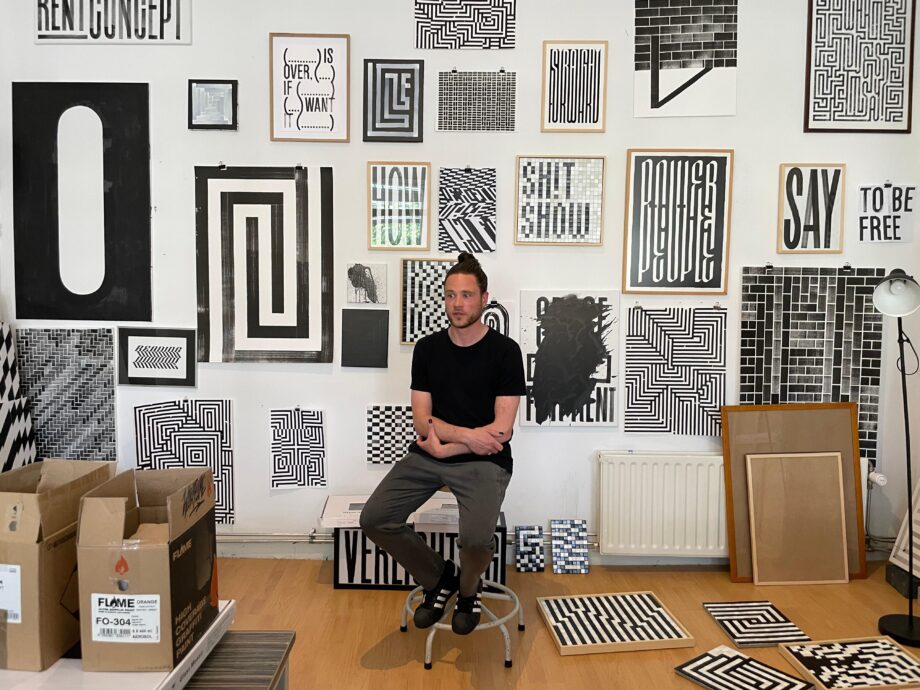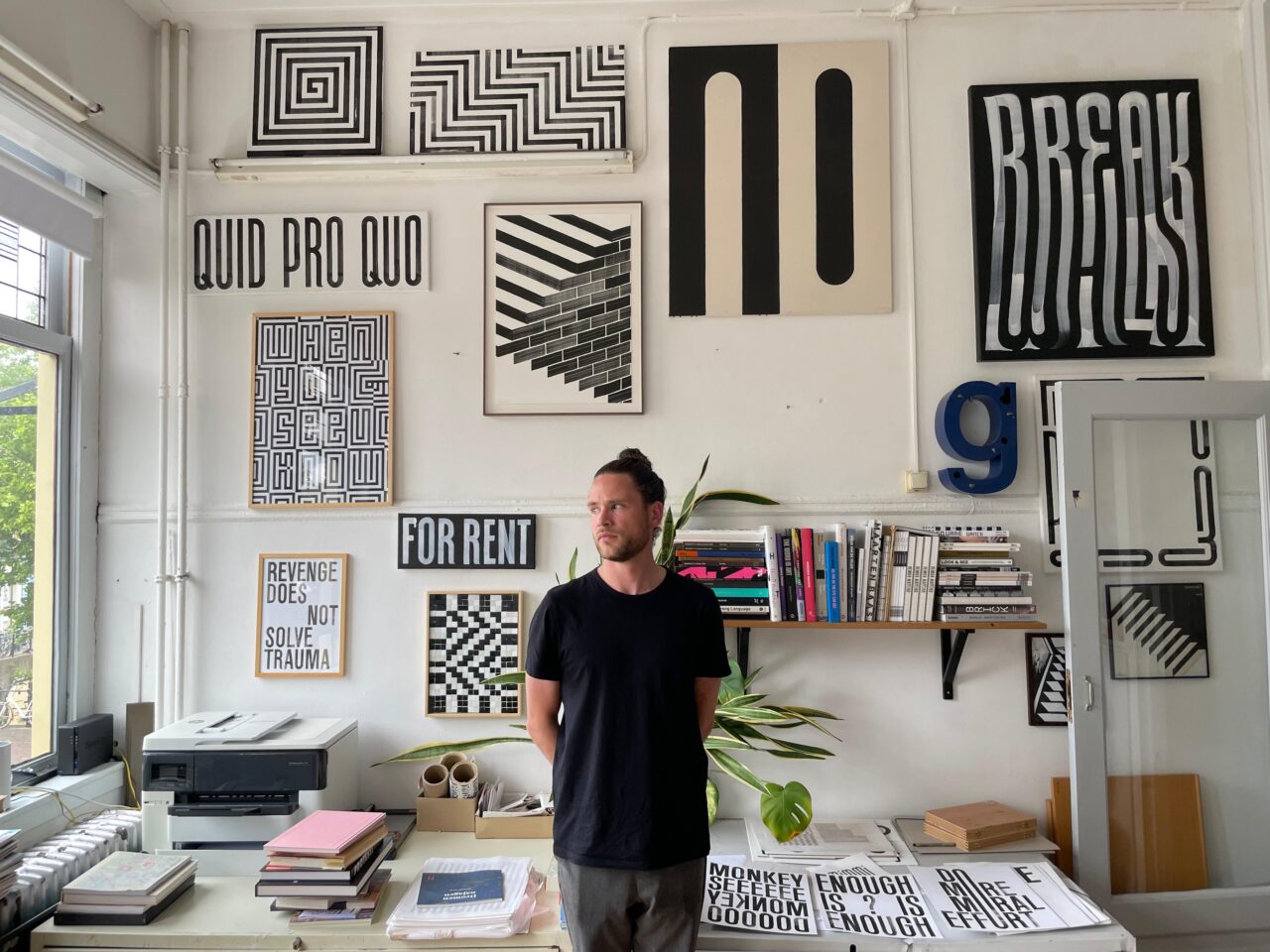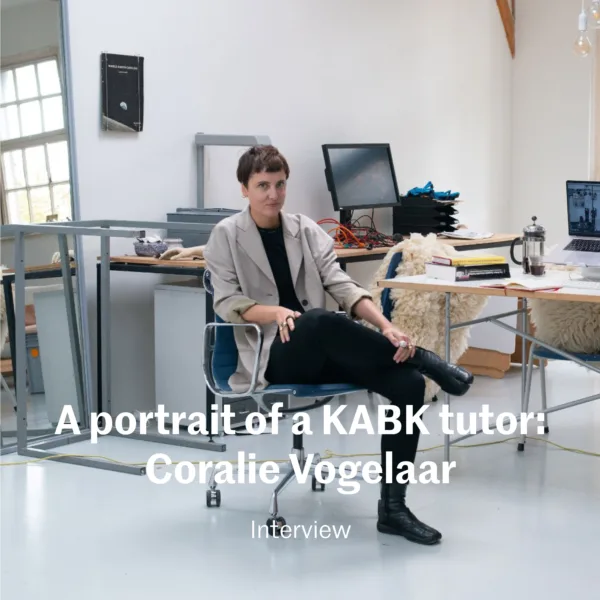In the heart of Utrecht, along the well-known Oudegracht, visual artist and KABK tutor Letters Guido de Boer has his studio. Black and white dominate the space, and if you look at his work for too long, it becomes hypnotic. You try to read it, but you almost lose yourself in it. Guido’s work is known for its large, hand-made brush-and-ink creations that combine visual art and text. His rhythmic designs intrigue with their hypnotic, graphic character. “Black and white symbolise a duality I’m interested in, a kind of honesty; it is what it is.” His work has been exhibited at the Kröller-Müller Museum, Stedelijk Museum Schiedam, and Kunstmuseum The Hague.
What are you working on right now?
What occupies me most at the moment is my book. I’ve published several zines before, but publishing a book has long been a dream. The idea is to create an edition from a stack of sketchbooks. My output is always high: I make a lot of drawings, from which often just one strong piece eventually emerges. I try to work in a disciplined way. Right now, I’m working on organising the logistics of the publication, and that’s quite a challenge.
Why do you want to make a book?
The creative process is often considered secondary to the final work, because the world wants a finished product. But in fact, someone’s process can be just as inspiring, maybe even more so. You see a person’s thought process and the steps they take toward a final piece. By bundling my sketches into a book, it still becomes a finished product that I can sell. Once the book and logistics are taken care of, it also becomes a source of income. That gives me the space to fully focus on creating new work again.
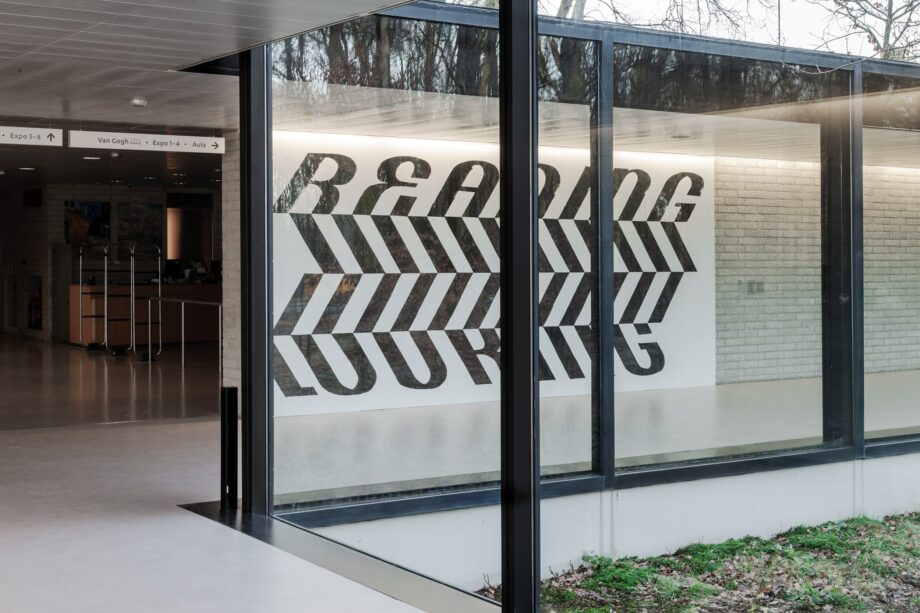
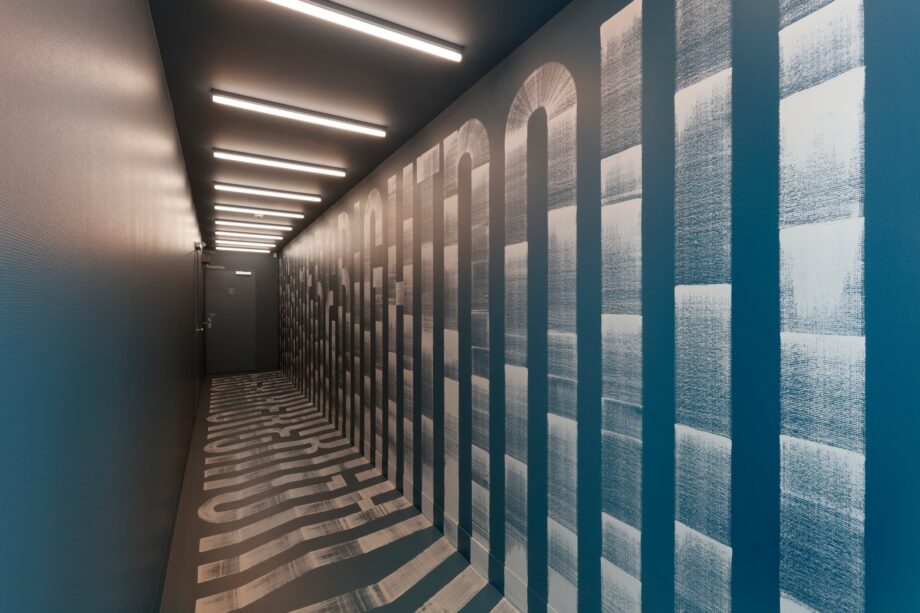

What is your background?
I’ve always liked working with my hands. In primary school, I already had a strong bond with handwriting. As a 12-year-old boy, I designed CD covers; so that graphic element was there from an early age, and by around the age of 15 I knew I wanted to do something with it in the future. After high school, I studied Graphic Design at HKU. After graduating, I started working as a graphic designer, but after a few years I grew tired of the graphic processes—I wanted more freedom and moved toward visual art.
So in a way you’ve returned to where it all began: handwriting.
Yes, my current work indeed stems from writing. It arises directly on paper, improvised: it flows from my head to my hand. I have to accept how it turns out. Touching up is not allowed; I paint once, and then it is what it is. That spontaneity has something exciting, and it’s meditative. My choice for black and white also comes from that; I like the duality and the symbolic meaning.
Is that sense of excitement also why you started doing performances?
Exactly, the moment I place something on a grid is a moment I want to hold on to and share. That is, for me personally, what it’s really about. That moment gives a kick, precisely because it can’t go wrong, especially when people are watching. With the High on Type collective, a group of designers and artists who, like me, share a passion for letters, I organise these performances. And they don’t always go smoothly. Not long ago, I did a performance during a lecture at a museum I won’t name, while I was creating a piece in the background. Because I wasn’t announced, it looked like I was just quickly finishing my work. That was a lesson: I must always make sure the audience understands what’s happening, either by explaining it myself or having someone else do so.

Where do you get your inspiration?
For me, inspiration is more like an intrinsic vitality you have as an artist. As long as your drive to make art is in the right place, inspiration comes naturally. My inspiration also often comes from books, and once I start working, more ideas follow automatically.
Is that also something you want to pass on to your students?
Absolutely, as a teacher you try to strengthen that drive in students. I also teach students to become experts in their own process, because if you don’t, nobody else will. I hope to show them that their work can be more than just a final product to exhibit or sell.
What do you enjoy about teaching?
The development you see in students. Especially with first-years, that growth happens very quickly, and that’s the most fun to guide. After just a few months, you see a light go on; the artistic being inside them awakens. Their perspective changes, their creativity grows. That also happened to me too during my studies. It’s almost addictive to witness that happening in others.
